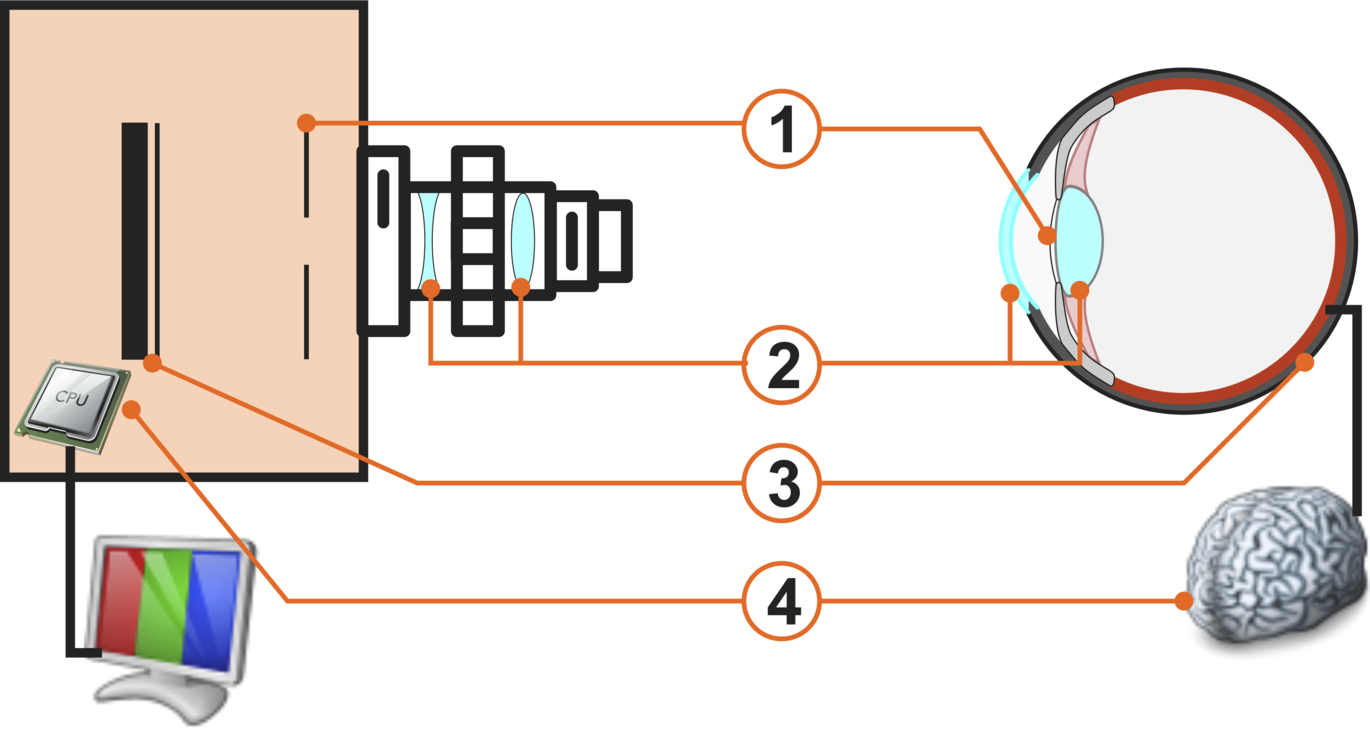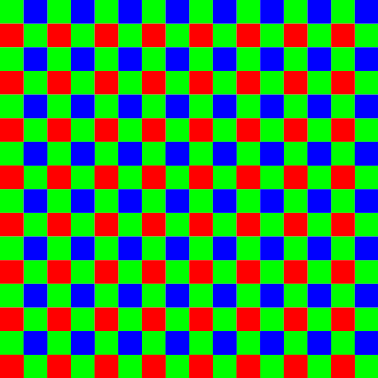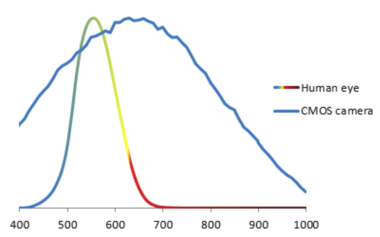摄像机 "看到 "的东西并不总是和人一样。评估哪一个的眼睛更好,在很大程度上取决于所涉及的任务类型;要在两者之间做出决定并不那么容易。
这不仅仅是眼睛和图像传感器之间的差异问题,还有下游过程的问题,例如在人类有意识地感知图像之前大脑的预处理。
交互过程,例如视角的变化,也是由人类自动完成的,但必须首先在机器中实现自动化。所有这一切的结果是,某些对人类来说很容易完成的任务,在机器视觉中却几乎不可能完成,反之亦然。
说到机器视觉,"谁都能看出来!"这样的宣言必须慎用。
色彩敏感度
人眼对光的敏感度是对数而非线性的。人眼可以区分大约 60 个灰度值和 700 万种颜色。相比之下,使用传感器获取的数字化图像可包含 256 到 4096 个灰度值和 16.7 种颜色。
色彩感知
将人眼的灵敏度与典型的 CMOS 传感器进行比较,结果如下:
人眼可见光的最大波长范围为 380-760 纳米。人眼最敏感的波长约为 550 纳米(绿光)。
CMOS 传感器通常可以检测 400 - 1000 纳米波长范围内的光。
与人眼相比,传感器在波长低于 500 纳米或高于 650 纳米时的灵敏度要高得多。在大多数情况下,CMOS 传感器对波长 650 纳米左右的光线最为敏感。这也是机器视觉系统经常使用红光的原因之一。
A camera does not always "see" the same thing as a human. Any assessment of which has better eyes will be heavily dependent on the type of task involved; it is not that easy to decide between the two.
And it is not just a question of the differences between an eye and an image sensor; there is also the issue of downstream processes such as the preprocessing by the brain before the human becomes consciously aware of the image.
Interactive processes, such as changes to the angle of vision are also carried out automatically by a human, but must first be automated in a machine. The result of all this is that certain tasks that are obviously easy for a human are virtually impossible in machine vision, and vice versa.
When it comes to machine vision, declarations like "Anybody can see that!" must be used sparingly.
Color sensitivity
Light sensitivity in the human eye is logarithmic rather than linear. The human eye can differentiate between approximately 60 grayscale values and 7 million colors. By contrast, acquired images digitized using sensors can contain between 256 and 4096 grayscale values and 16.7 colors.
Color perception
When the sensitivity of the human eye is compared with a typical CMOS sensor, the results are as follows:
The maximum range of wavelengths for light visible to the human eye is 380 - 760 nm. The human eye is at its most sensitive at a wavelength of approximately 550 nm (green light).
CMOS sensors can typically detect light in a range of wavelengths from 400 - 1000 nm.
In contrast to the human eye, sensors are significantly more sensitive at wavelength ranges below 500 nm or above 650 nm. For the most part, CMOS sensors are most sensitive to light around wavelengths of 650 nm. This is one reason why red lights are often used for machine vision systems.



